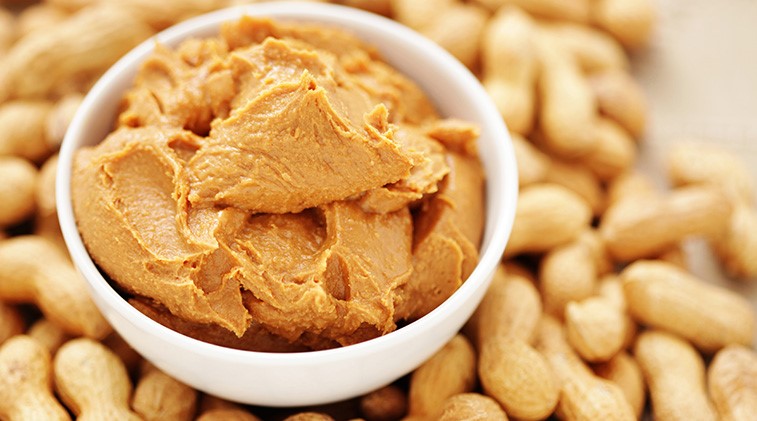The effects of fibre were first described thousands of years ago with the famous Greek thinker Hippocrates noticing, in around 430BC, the different digestive system effects of coarse wheat when compared to more refined forms. Most people are aware that fibre is good for them and promotes the health of the gut, but in recent times it is becoming increasingly evident that not only does fibre help us locally in the gut, but that our gut is also intrinsically linked to our bodies in a range of different ways many people might not expect.
Types of Fibre
Fibre comes in two main forms, soluble and insoluble fibre, and each have different roles in the body. Insoluble fibre does not form a solution when mixed with water and its main function in the body is to help improve ‘laxation’, the ability to pass waste, and also in water regulation. Insoluble fibre is more common in foods than soluble fibre, but both are typically present in good amounts in most high fibre foods such as cereals and vegetables.
Soluble fibre, as the name would suggest, forms a solution when mixed with water and is the main source of fuel for our gut bacteria. Providing this fuel for fermentation by gut bacteria is now being discovered as being increasingly important for health. There are also other forms of non-digestible carbohydrate, such as resistant starch, sugar alcohols (often found in low carb protein bars) and inulin which can also be fermented by the bacteria in the gut.
Fibre and Calories
Although people don’t often consider fibre as contributing to our energy intake, estimates for energy contribution are in the region of 1-2kcal per gram. This is because although they ‘survive’ digestion into the small intestine and are not used as energy in the same way as fats, proteins and other digestible carbohydrates (sugars and starches), the fermentation by bacteria in the gut (also called the colon or large intestine) produces types of metabolic fuel in the form of short chain fatty acids (SFA’s) that do contribute a small amount to our energy intake.
To place this in to context, the recommended fibre intake per day is around 25g for an average person… so the amount of calories in fibre if consuming around this recommendation is really not worth worrying about.
Gut Bacteria
Our gut bacteria come in thousands (estimates of 15-36000!) of different species and most are good ‘symbiotic’ bacteria that work with us to help keep us healthy. In total numbers this could equate to TRILLIONS of individual bacteria in our gut. These good bacteria are reduced in number by poor lifestyle choices including smoking, lack of activity, poor eating habits and even stress and can also be impacted by antibiotic use as they kill gut bacteria indiscriminately from those that may have made us ill1.
The SFA’s produced by these bacteria, namely one called butyrate, act as a key fuel for both the digestive and immune system. This helps provide an effective protective barrier against disease and also impacts the pH of our gut, which also directly destroys pathogens. In animal studies there has also shown to be an increased number of ‘killer t-cells’ and other immune system cells that work throughout the body to protect against illness and disease. Certain types of bacteria are also integral to the creation of essential vitamins such as K, B12, Biotin, Folate and Thiamine2.
In terms of our neurological function, we know that stress has a negative effect on gut bacteria and this can be a trigger for those with irritable bowel disease. There have also been some links between fibre consumption and cognitive function alongside neurological diseases such as Alzheimer’s in population studies, with some mechanistic evidence to support this link coming from animal studies3. Although nothing can be confirmed as of yet, it is certainly an area of interest for further research into gut-nervous system interactions.
Adequate fibre intake is linked to a reduced risk of diabetes, cardiovascular diseases, arthritis, certain types of cancer and other inflammatory disorders. As an added bonus most high fibre foods also contain other health protective compounds such as antioxidants, phytosterols and saponins2.
High Fibre Foods & Supplements
Fibrous foods are also great for weight loss as fibre is very satiating (the feeling of fullness that we get after eating). If you are looking to lose weight then bulking out the diet with, and focusing on foods that contain, plenty of fibre is going to make the process much easier.
High fibre foods include nuts, seeds, fruits (pears and apples in particular), root and green vegetables, oats and wholemeal products such as wholemeal bread. Despite the abundance of fibre in many foods, people may fall short of hitting their allowances, especially for those who are dieting because a reduction in calories means a reduction in opportunity to consume fibre. Ironically though, it is often people who are looking to gain muscle that don’t consume enough fibre because they tend to switch towards easier to digest, more palatable, lower fibre foods.
Regardless of your current goals, if you do struggle to eat enough fibre (around 10-15g for every 1000kcal) each day because of a lack of fibrous foods in the diet, then fibre supplements such as VitaFiber™, Wheatgrass Powder, Broccoli Powder, Spinach Powder and Psyllium Husks can easily be added to shakes and smoothies and are a great way to ensure you hit your daily fibre requirements.
References
1.) Conlon and Bird (2015) The Impact of Diet and Lifestyle on Gut Microbiota and Human Health. Nutrients 7:17-44.
2.) Joyce and Gahan (2013) The gut microbiota and the metabolic health of the host. Current opinion in gastroenterology 30:00
3.) Bourassa et al. (2016) Butyrate, neuroepigenetics and the gut microbiome: Can a high fiber diet improve brain health? Neuroscience Letters 625:56–63









